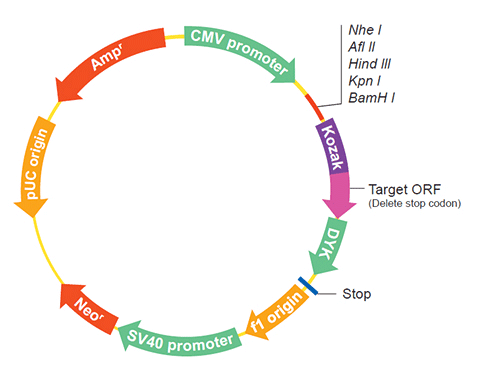| Gene Symbol | ECM11 |
| Entrez Gene ID | 852057 |
| Full Name | Ecm11p |
| Gene Type | protein-coding |
| Organism | Saccharomyces cerevisiae S288C |
HOME
ORF » Species Summary » Saccharomyces cerevisiae S288C » ECM11 cDNA ORF clone
| Gene Symbol | ECM11 |
| Entrez Gene ID | 852057 |
| Full Name | Ecm11p |
| Gene Type | protein-coding |
| Organism | Saccharomyces cerevisiae S288C |
| mRNA | Protein | Name |
|---|---|---|
| NM_001180754.1 | NP_010734.1 | Ecm11p |


The nucleotide sequence of Saccharomyces cerevisiae chromosome IV.
Jacq C, Alt-M?rbe J, Andre B, Arnold W, Bahr A, Ballesta JP, Bargues M, Baron L, Becker A, Biteau N, Bl?cker H, Blugeon C, Boskovic J, Brandt P, Br?ckner M, Buitrago MJ, Coster F, Delaveau T, del Rey F, Dujon B, Eide LG, Garcia-Cantalejo JM, Goffeau A, Gomez-Peris A, Zaccaria P
Nature387(6632 Suppl)75-8(1997 May)
Life with 6000 genes.
Goffeau A, Barrell BG, Bussey H, Davis RW, Dujon B, Feldmann H, Galibert F, Hoheisel JD, Jacq C, Johnston M, Louis EJ, Mewes HW, Murakami Y, Philippsen P, Tettelin H, Oliver SG
Science (New York, N.Y.)274(5287)546, 563-7(1996 Oct)
GeneRIFs: Gene References Into Functions What's a GeneRIF?
ECM11 was dispensable for centromere pairing and segregation of achiasmate partner chromosomes.
Title: Meiotic Centromere Coupling and Pairing Function by Two Separate Mechanisms in Saccharomyces cerevisiae.
SUMOylation may occur subsequent to the incorporation of components like Ecm11 into an SC precursor structure.
Title: SUMO localizes to the central element of synaptonemal complex and is required for the full synapsis of meiotic chromosomes in budding yeast.
post-translational modification of Ecm11 with SUMO is critical for ensuring the chromosomal loading of transverse filaments. Thus, our work provides a molecular basis for how homologous chromosomes become tightly associated during meiotic prophase.
Title: The Ecm11-Gmc2 complex promotes synaptonemal complex formation through assembly of transverse filaments in budding yeast.
required in early stages of meiosis where its function is related to DNA replication and crossing-over
Title: The Saccharomyces cerevisiae gene ECM11 is a positive effector of meiosis.
The following ECM11 gene cDNA ORF clone sequences were retrieved from the NCBI Reference Sequence Database (RefSeq). These sequences represent the protein coding region of the ECM11 cDNA ORF which is encoded by the open reading frame (ORF) sequence. ORF sequences can be delivered in our standard vector, pcDNA3.1+/C-(K)DYK or the vector of your choice as an expression/transfection-ready ORF clone. Not the clone you want? Click here to find your clone.
| CloneID | OSi01517 | |
| Clone ID Related Accession (Same CDS sequence) | NM_001180754.1 | |
| Accession Version | NM_001180754.1 Latest version! | Documents for ORF clone product in default vector |
| Sequence Information | ORF Nucleotide Sequence (Length: 909bp) Protein sequence SNP |
|
| Vector | pcDNA3.1-C-(k)DYK or customized vector |  User Manual User Manual |
| Clone information | Clone Map |  MSDS MSDS |
| Tag on pcDNA3.1+/C-(K)DYK | C terminal DYKDDDDK tags | |
| ORF Insert Method | CloneEZ™ Seamless cloning technology | |
| Insert Structure | linear | |
| Update Date | 2019-10-31 | |
| Organism | Saccharomyces cerevisiae S288C | |
| Product | Ecm11p | |
| Comment | Comment: REVIEWED REFSEQ: This record has been curated by SGD. This record is derived from an annotated genomic sequence (NC_001136). ##Genome-Annotation-Data-START## Annotation Provider :: SGD Annotation Status :: Full Annotation Annotation Version :: R64-2-1 URL :: http://www.yeastgenome.org/ ##Genome-Annotation-Data-END## COMPLETENESS: incomplete on both ends. | |
1 | ATGACTGTTA TAAAGACAGA ACCAACAACA GAAGTGACAT TATATTCTCC ACCATCAAAA |
The stop codons will be deleted if pcDNA3.1+/C-(K)DYK vector is selected.
| RefSeq | NP_010734.1 |
| CDS | 1..909 |
| Translation |

Target ORF information:
Target ORF information:
|
 NM_001180754.1 NM_001180754.1 |

1 | ATGACTGTTA TAAAGACAGA ACCAACAACA GAAGTGACAT TATATTCTCC ACCATCAAAA |
The stop codons will be deleted if pcDNA3.1+/C-(K)DYK vector is selected.
The nucleotide sequence of Saccharomyces cerevisiae chromosome IV. |
Life with 6000 genes. |